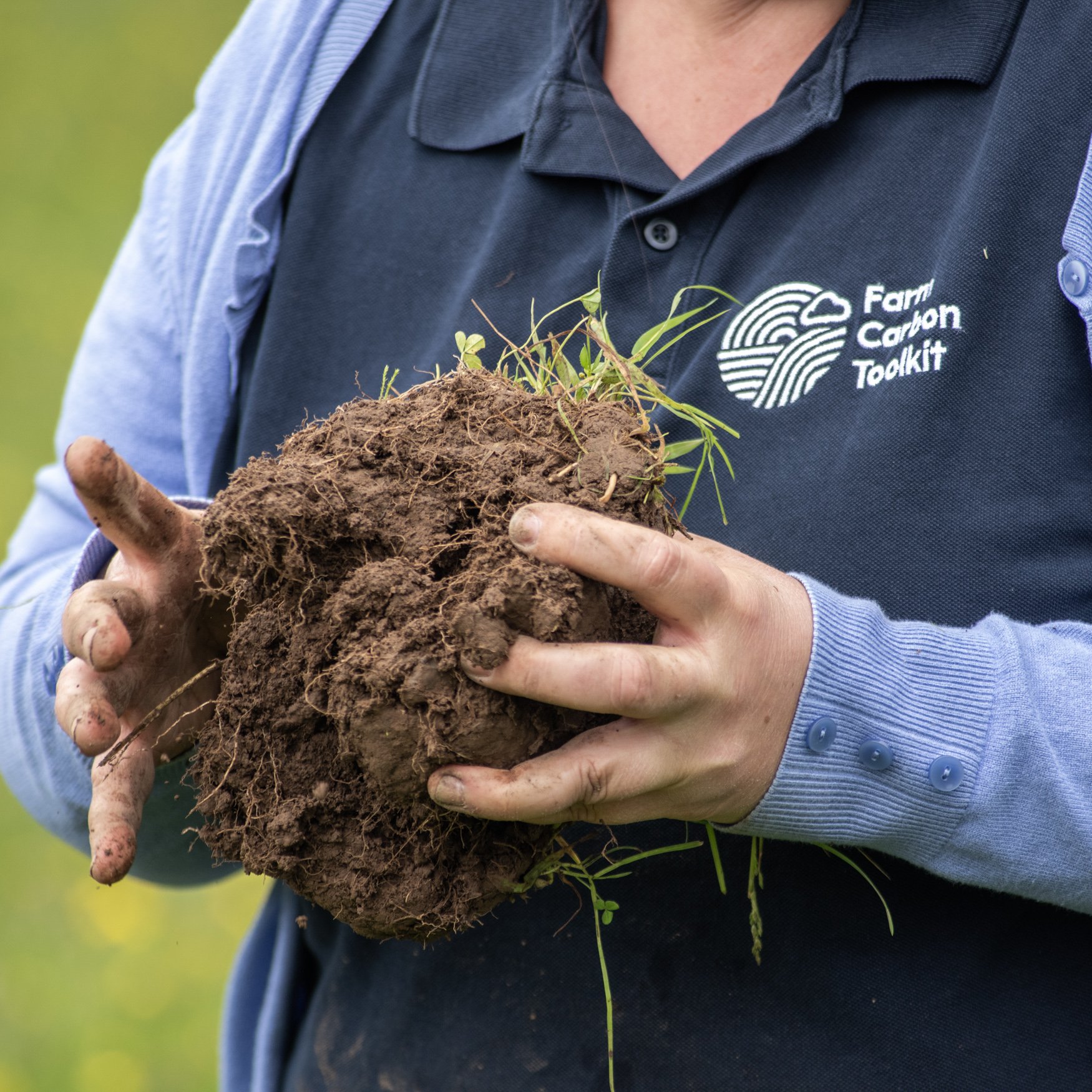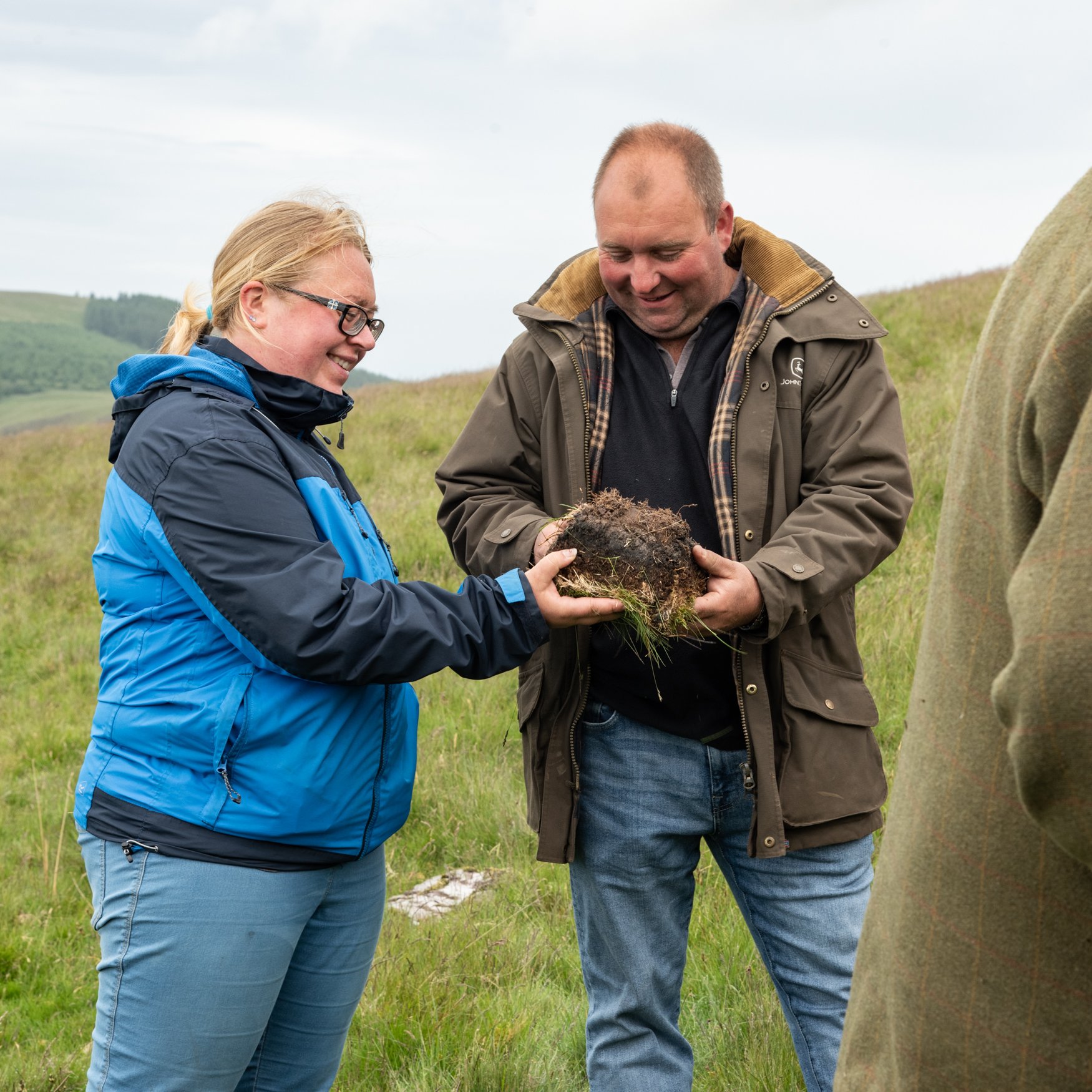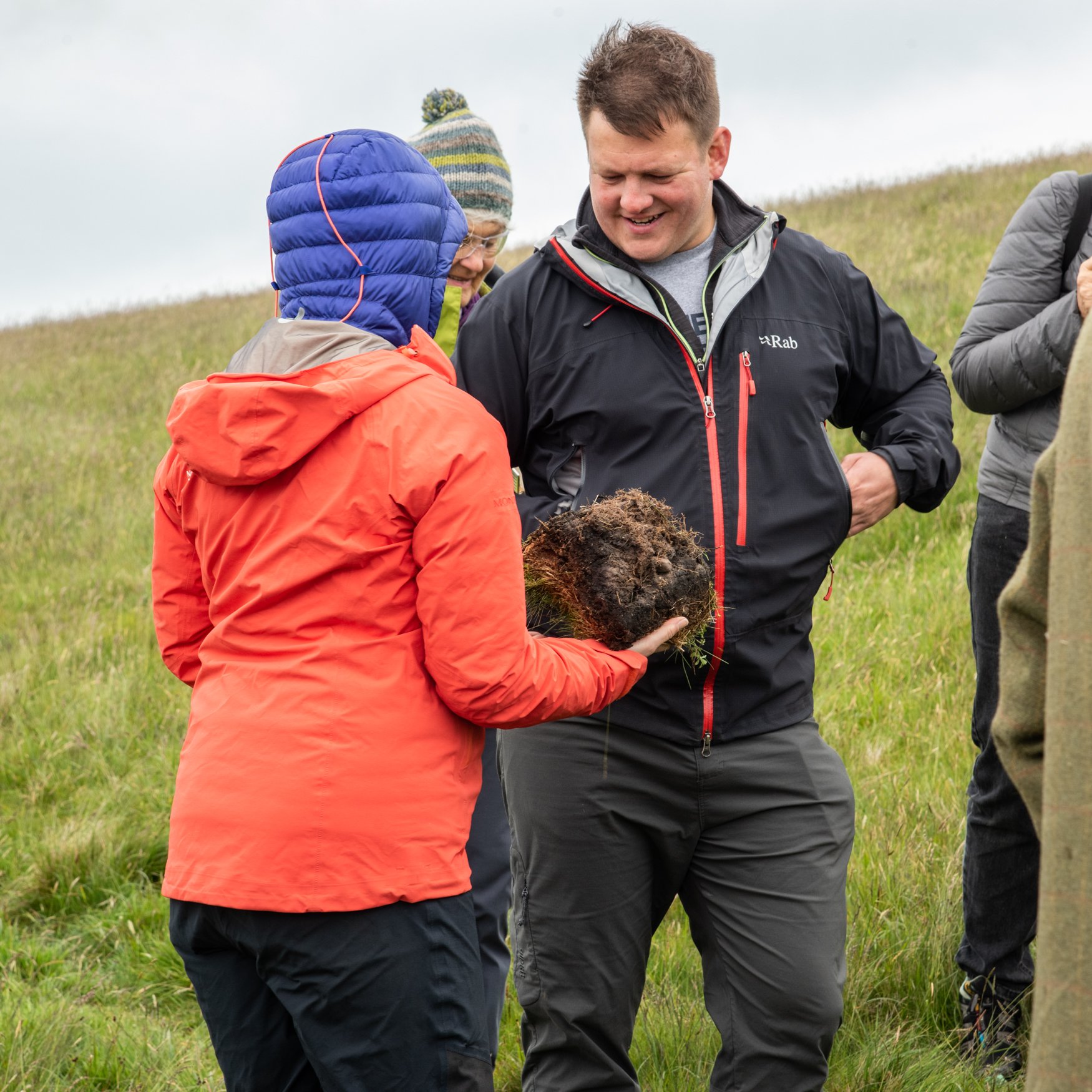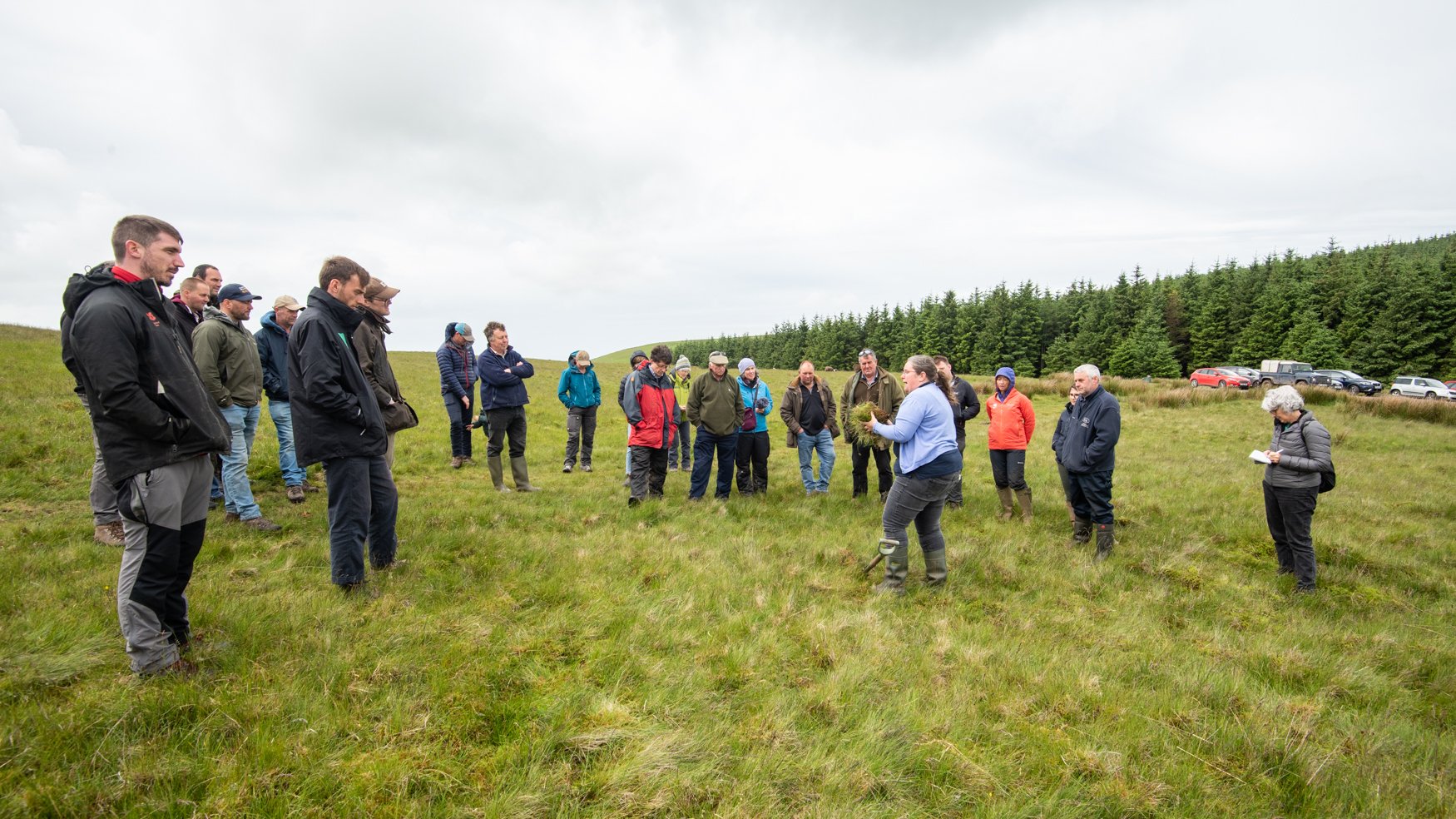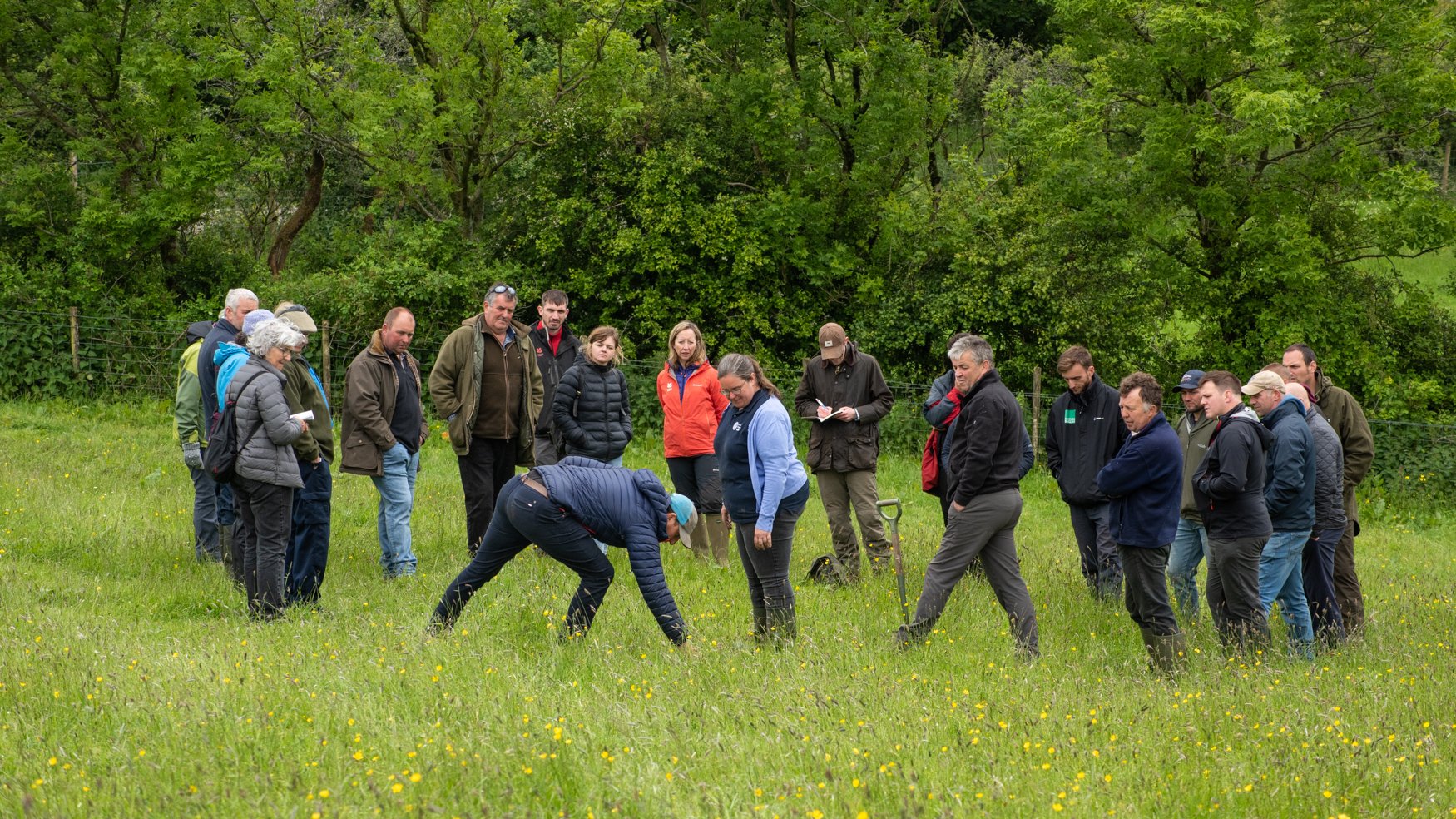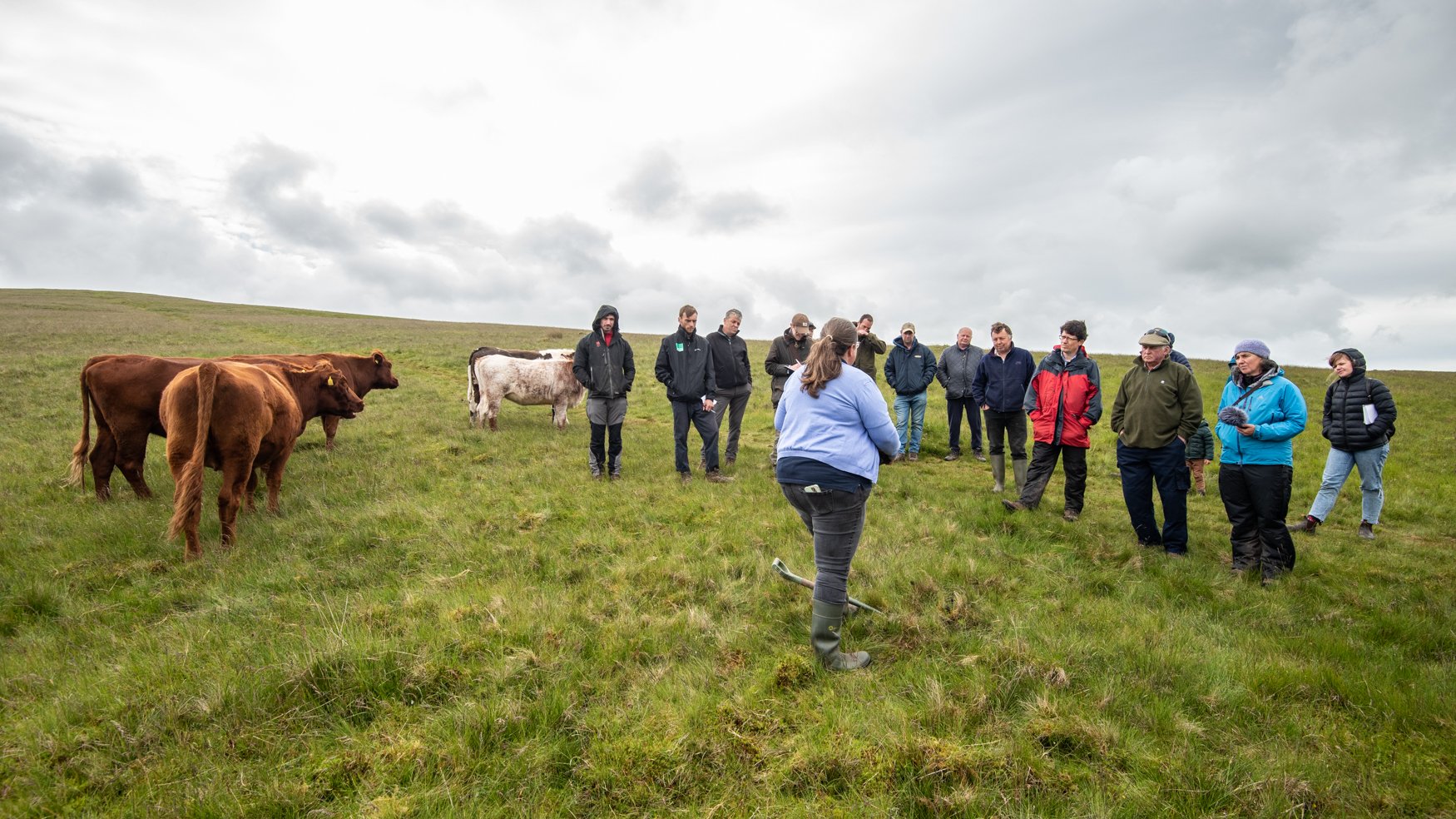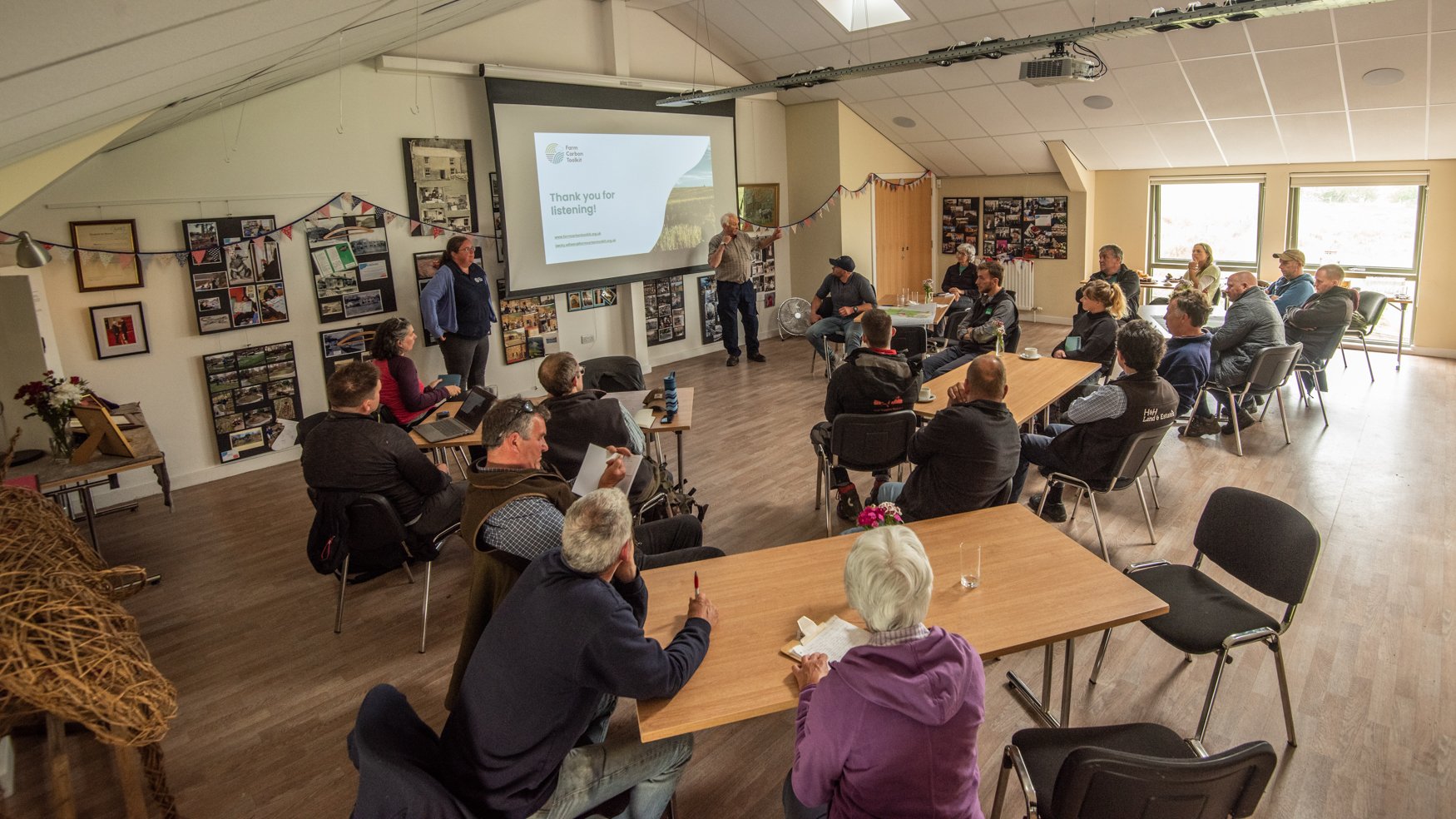Considering carbon in upland commons
Early in June, when the sun was out but the wind was enough to make us pull our hats tight over our heads, Rob and I headed out onto the flanks of Kinniside with a group of graziers who use the common as part of their farming system. We were all there to learn about carbon storage in this vast upland common, and how it could potentially store more.
With more severe weather events fuelled by a changing climate, there’s a global drive to reduce greenhouse gas emissions.* Farmers across the UK are keen to find out what they can do to store more carbon, emit lower levels of greenhouse gases, and still run viable businesses. Research has been done in some settings, but not in the context of a farming business that uses upland commons as well as lower ground. The commoners we’re with today want to build their own measurement system. This is a critical piece of information that will be useful to shape decisions going forwards.
Carbon is only one part of the picture, of course: the diversity of habitats and species is also of vital importance in a holistic system of health in the uplands. A group of farmers is now working together to map and assess the landscape, and combine knowledge and practice for optimal land management through sustainable nature-friendly farming: the West Lakeland CiC , involves commoners and farmers working in an area that includes the upland commons of Nether Wasdale, Stockdale Moor and Kinniside, the freehold fells of upper Wasdale and upper Ennerdale and the farmland of the lower valleys.
‘By measuring the upland commons and the inbye land, that will be the first time the two are linked up,’ says Will Rawling, who’s one of the instigators of the CiC. ‘That’s realistic for commoning systems. Once we’ve learnt here on Kinniside, we can use the model on Nether Wasdale and Stockdale Moor and our work can be more linked up - we can manage things better.’
Today, Becky Willson and Emma Adams from Farm Carbon Toolkit have come to talk about soil and carbon, and learn about this common from the farmers. The day begins outside, with clods of earth being dug up in different locations, and ends indoors with tea, cakes, and a presentation where more details can be discussed, with the help of graphs and maps. This is the first part of a process that, it’s hoped, will lead to the development of a new tool for calculating carbon capture and storage. The key aim of this collective endeavour on Kinniside Common, say Will and Becky, is to ‘ground truth this place’. The hope is that learning more, in this particular context, will reveal where current practices are beneficial and provide opportunities to tailor farming practices and land management to offer more storage of carbon as well as greater biodiversity.
Carbon, soils and managing the land
In the agricultural sector, carbon is only a small percentage of total emissions. The majority comes from nitrogen dioxide and methane, and together these account for around ten percent of UK greenhouse gas emissions. Even without agricultural practice, though, the country’s landscapes will still emit these gases - so how the land is managed is absolutely key. Becky believes that agriculture is in a massively important position to provide solutions; and this will happen best when different elements of a farm’s business are well understood.
As we huddle around, watched over by a group of curious cows, and inspect clods of earth for worms, Becky tells us that soil has the capacity to store twice as much carbon as there is in the atmosphere. And the healthier soil is, the more carbon it stores.
During the day, the emphasis is on soil health: soil that’s not compacted, that has good quantities of organic matter, plenty of worms and soil microbes, and a good vegetation cover with roots reaching to different depths. As the farmers talk about their own home farms and the areas of the common their animals are hefted to, it becomes clear that there’s a wide range of vegetation, from rough grass to deep peat bogs on the open fell, and from species-rich hay meadows to rocky ground, riparian woodland and hedgerows on the inbye lands. Some areas are grazed by cows, others by sheep, some by both.
As a general rule, any fertiliser that farmers add to their fields is organic: the manure of cows and sheep that graze there, or beneficial plants such as clover. ‘I sprinkle white clover seed across the field at the same time as I spread the muck,’ says Sam Rawling (see Sam’s introduction here).
‘I don’t plough or level the ground, or add fertiliser. By adding clover at the same time as I’m spreading, I’m putting less pressure on the soil because the tractor only passes once.’ Sam has done a lot of research and returns to the bigger picture. ‘It’s not all to do with carbon,’ he continues, ‘It’s a change of mindset about what you do, with what you’ve got.’
Looking at a map that indicates different vegetation types on Kinniside Common
A community in conversation
The conversations of the day cover many different elements - composting manure, herbal leys, hedgerows, meadows, birds, how soil can hold water better, how best to enrich grassland, what goes into carbon calculations - and like the mychorizzal fungal network that runs through soils, all of these are connected to each other.
This meeting highlights the interconnections not just between different pieces of land, and different systems of land management, but also the connections between people, and why these matter. The existing community of commoners is a huge asset, as people managing land across several adjoining valleys and fells can collaborate.
In the coming months the farmers will be working with support from the team at Farm Carbon Toolkit to learn more about their soil and to do pilot studies; these will help in the development of a toolkit to calculate carbon sequestration and emissions across the whole farming system.
In a year or so, there will be a new story to tell as they reflect on their progress and get closer to understanding what the land they work with offers in the context of mitigating climate change. This is one piece of a much wider jigsaw as a picture emerges about the best way to move forwards, for climate, for nature, for wildlife, for carbon storage, and for farming.
-
Calculating carbon emissions and sequestration, and the footprint of individuals, farms, businesses, sectors or landscapes, is complex. To find out more about the development of toolkits that can take account of the specifics for each situation, check the website: https://farmcarbontoolkit.org.uk/.
* In Cumbria, the aim is to reach ‘net zero’ by 2037 (zero carbon cumbria). For the UK, the target is set for 2050 (although the government has been challenged for doing too little to support the country to achieve this: more info, see here: https://www.instituteforgovernment.org.uk/explainers/net-zero-target.)


